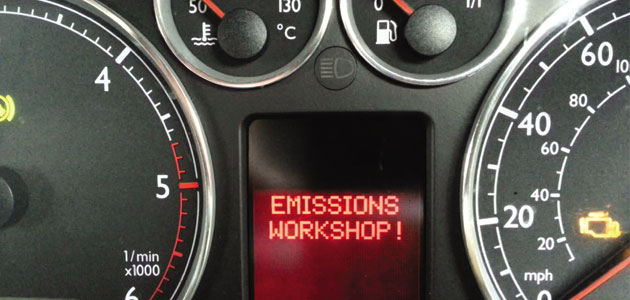
 Tim Howes, NGK’s Deputy General Manager – Supply Chain & Technical Service.
Tim Howes, NGK’s Deputy General Manager – Supply Chain & Technical Service.
Due to the hostile environment in which they work, sensors are subject to a degree of wear and tear and ageing. It would be impossible to say definitively what the service life of a Lambda sensor should be due to the very different conditions that each vehicle experiences under different drivers. City driving with lots of stop/start operation will have a different influence on the life expectancy of a Lambda sensor compared to steady motorway use.
We recommend that the function of the sensor is checked every 20,000 miles or annually. The emissions check as part of the current MOT test samples the exhaust gases to monitor the efficiency of the engine, exhaust system and engine control systems. The Lambda sensor is a vital part of this system and its function is therefore influenced by many other components.
A malfunction of an associated part may directly affect the performance of a sensor. An oscilloscope and gas analyser is a much more accurate way of assessing sensor performance than relying on fault codes alone. Look for slow response times, output range and heater function
Contaminants from poor quality oils and fuel which remain in the exhaust gasses can become deposited on the sensor element, affecting its operation. Even coolant from a leaking head gasket can reach the element.

‘Universal’ or ‘Bespoke’?
A ‘universal’ Lambda sensor is designed to cover as many applications as possible by splicing in the connector from the unit being replaced. In theory this sounds like a good idea however, in practice, the potential for a mismatch with the vehicle’s system or subsequent premature failure can be high. Apart from the more obvious choices of number of wires and whether it’s a zirconia or titania type, there are several base sensor designs to be considered with differing characteristics that includes heater element performance, response time performance and even internal electrical grounding.
Once the correct choice has been made you need to worry about making sound electrical connections and ensuring that you marry the lead wires correctly. Sensor manufacturers’ wiring colours differ so you can’t always simply join the matching colours
For some sensors, soldering the leads together is out of the question as they may need to ‘breathe’ through the tiny gaps in the lead wires and poor quality crimping can lead to water or oil ingress which can damage the sensor or affect its performance
Apart from all that, if you have not even disconnected the multiplug when splicing in the new unit you run the risk of missing such problems as corroded or damaged connector pins. In addition, many vehicles now use wideband sensors and for this type there is no substitute other than the correct OE specification item.
OE experience
NGK Spark Plugs (UK) manufactures Lambda sensors under the NTK brand name and supplies a comprehensive range of Lambda sensors to the UK aftermarket. The experience of supplying major vehicle manufacturers allows the company to offer the right sensor for every vehicle application.









